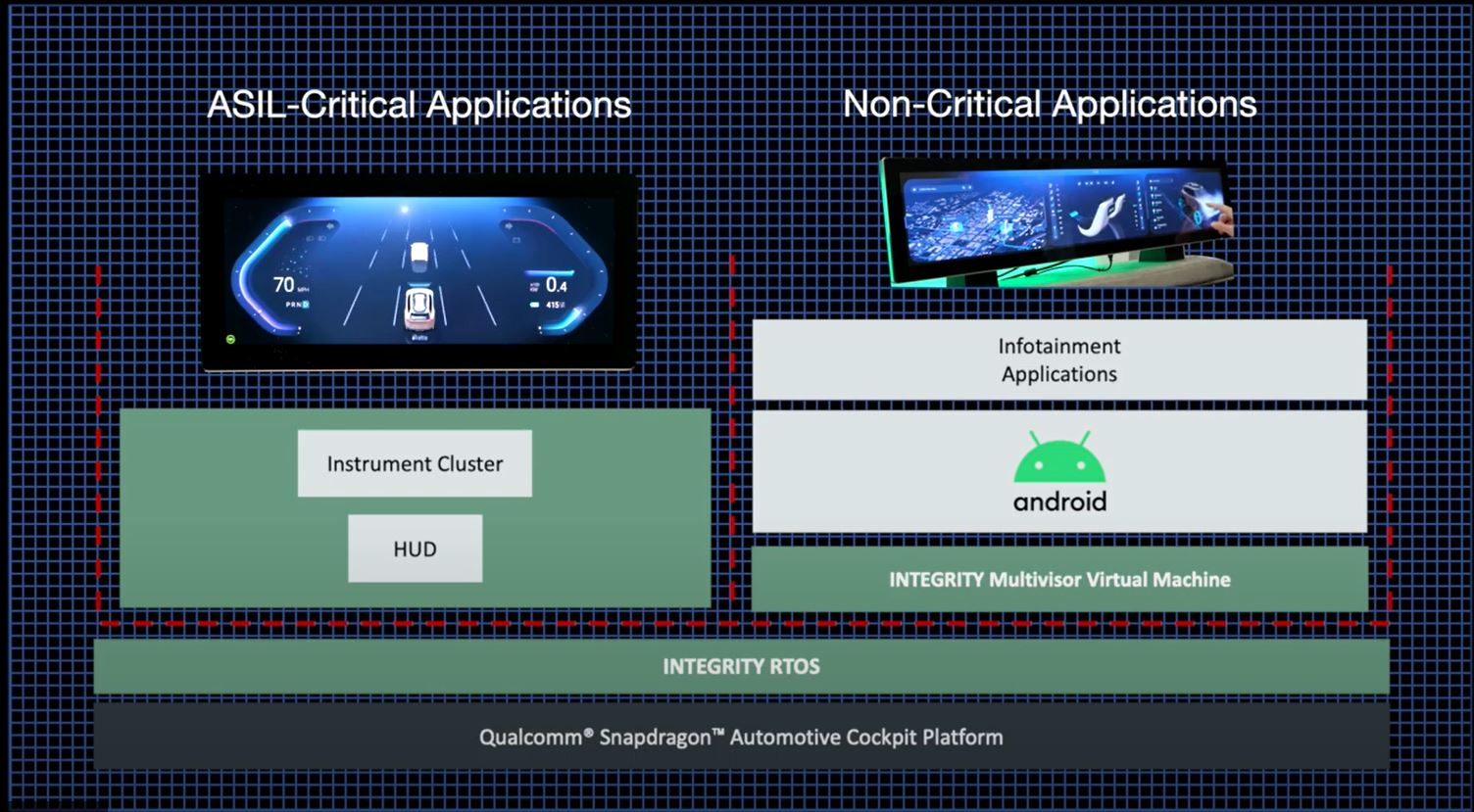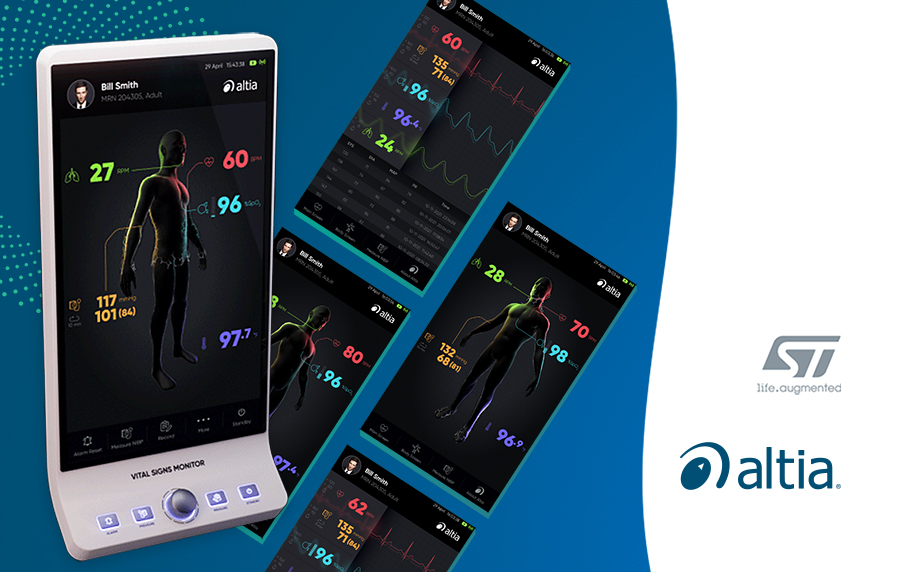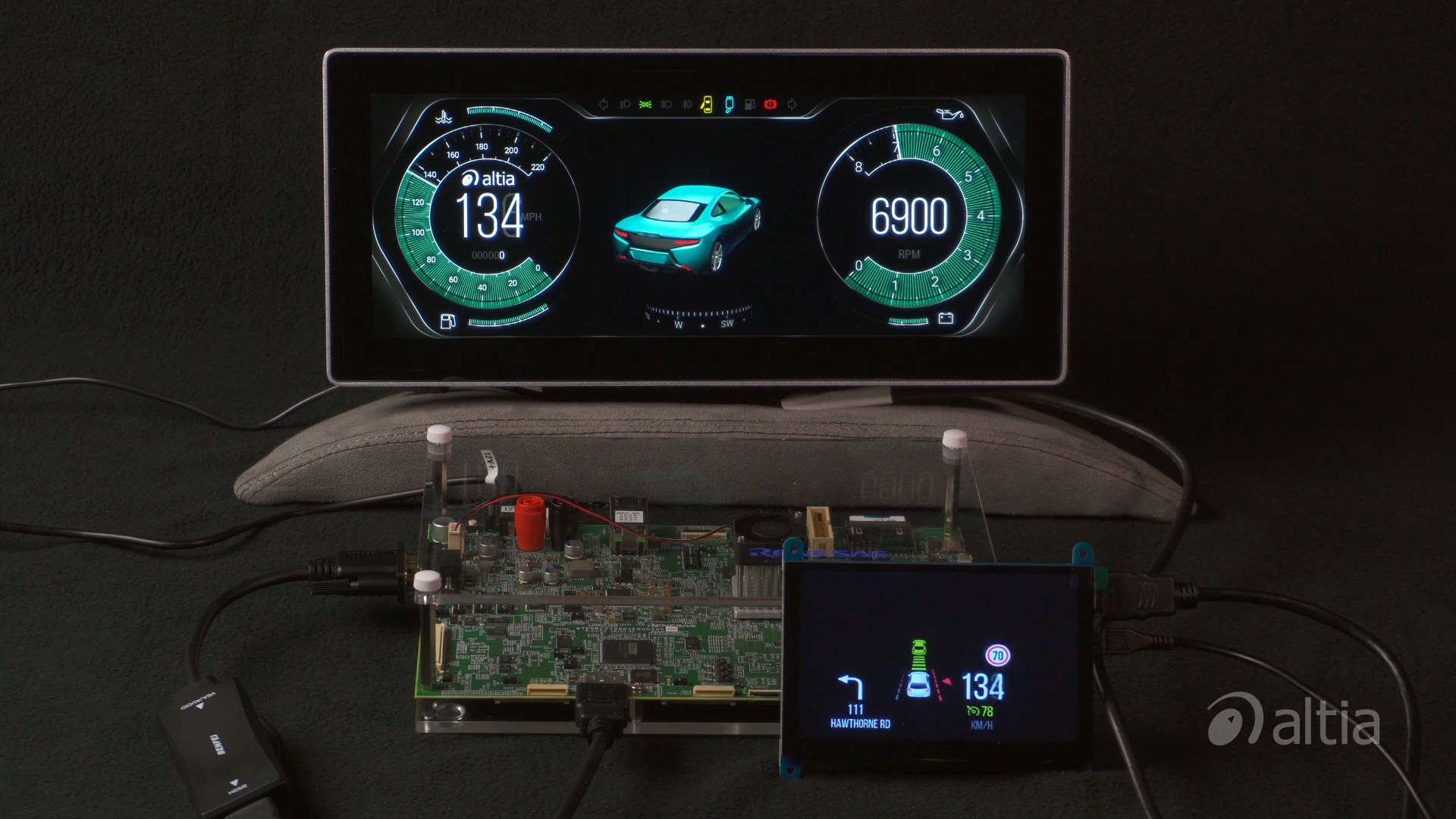Product: Altia Design
How Game Design Tools Are Modernizing Automotive Cockpits
9 Ways Your GUI Software Might Be Letting You Down
9 Ways Your GUI Software Might Be Letting You Down
Open-source software is attractive because there is no or low financial barrier to entry. Unfortunately, it leaves the door open to other costs. Developing and maintaining the GUI is 50% more expensive when you hand-code it. Then you have to pay for a commercial license if you don’t want to make your code open source. What started as a cost-saving measure sets you up for a long and expensive development cycle.
Alternatively, your GUI application development environment can accelerate design and delivery, even allowing you to test your design on real hardware as you build. Every job is easier with the right development tool. While you might not see heavy specialization from an open-source tool, some solutions and resources are made specifically with embedded GUI projects in mind.
Choose an Embedded GUI Tool That Helps, Not Hurts
Creating a great product isn’t easy, which is why some parts of the process must be simple. Choosing the right technology can prevent a lot of headaches for your embedded GUI team. These nine considerations will help you avoid common pitfalls and stay on the road to a successful release.
1 – Smaller Memory Footprint
Until money is no object, cost will always be a factor in the product development process. When manufacturers use the least expensive hardware, the product’s retail price will be more attractive to consumers. Every opportunity to reduce RAM and Flash requirements by 50% will show up in the bottom line, and vice versa.
For example, the budget for a smart thermostat cannot accommodate a $100 processor. The cost savings can also become dramatic as displays grow in size or complexity. Thoughtful architecture yields efficient code, keeping the hardware budget down. The ability to fit within a small memory footprint is especially vital for the code generated by low-code and no-code solutions.
2 – Low-Code or No-Code GUI Design
A small army of GUI developers can find ways to minimize the memory footprint, but such labor isn’t especially cost-effective. Low-code and no-code GUI design technology reduces engineering costs and the need for handoffs
If you’re a designer, draw a circle and drop it where you want it. No one has to think about the formula of a circle or how each pixel should display. When designers can use the software themselves, there’s less back-and-forth with engineers before it goes into manufacturing.
3 – Intuitive Usability
Altia customers report that using the right GUI design stack helps get teams up and running several times faster than other GUI application development environments. Any of the following might get you to market with less support and less wasted time:
- Integrations such as MathWorks Simulink
- Generalized API for a low learning curve
- Easy porting of the GUI onto hardware
It’s one thing to sit down and design without code. It’s another to get all the way to launch.
4 – Turnkey Support of Low- to High-Capability Hardware
Scalable and portable production programs make iterative growth easier to manage. Instead of reinventing the wheel, the same GUI design should be deployable repeatedly. One multinational oven manufacturer has been able to roll out new features one after another on top of the existing code base.
5 – Optimized Use of 3D Graphics
Working with 3D graphics can become a cost center instead of an added value if your GUI development environment isn’t up to the task. Rendering realistic representations in medical devices or similar products is a lofty target. It might be worth considering all of the following:
- Workflow to import 3D graphics
- Native 3D content capabilities
- Control over aesthetic quality
3D graphics are only impressive and useful when they’re done correctly.
6 – 100% Pure Native Code: No Black Boxes, No Minimum Footprint
Solutions that require a “black box” runtime engine enforce a minimum footprint that isn’t always favorable. Such solutions must be prepared for every capability the graphic library allows, regardless of whether the design needs it.
You can’t take the black box apart and might need more expensive hardware to fit everything. It doesn’t make sense to pay for 3D capabilities if you’re building a simple thermostat interface with a knob and a number.
Black box solutions are especially risky in applications like medical device manufacturing and anything that will go in a heavy machine. If you need certification or submit to an inspection, you’ll unlikely get access to the black box. This means getting another company involved and all the delays that come with that.
7 – Cloud-Based Collaboration
Can your global team collaborate on a single target? The cloud wasn’t invented for GUI designers to work together from their homes on the exact same hardware-software stack—but smart companies are working with innovative solutions that make that happen. For example, consider the off-highway EV company testing its design on real, cloud-based hardware. It’s one more way to keep the project on schedule with remote team members or during a chip shortage.
8 – Better Product Support
It’s one thing to have a large user community and another to offer live support. What kinds of resources are available for monitoring and triaging? Connecting with a key development engineer will almost always be faster than customer service from a lower-tier engineer.
9 – End-to-End Engineering Services
When your team needs experience or hours to keep up, all kinds of professional engineering services are available. Some GUI design environments have connections with third-party partners or known consultants but no capacity to complete the project themselves. Compare that to a major surgical device maker that saves time and resources with turnkey product delivery.
Faster Time to Market
The nine top considerations for GUI development environments all serve a common goal: getting a product to market more efficiently. Simple workflows shorten the path to profit, conserve resources, and ultimately provide a superior user experience. If you want to learn more, our team is happy to show you how Altia stacks up in any or all of these categories.
Altia and Green Hills INTEGRITY for Automotive Cockpit Applications
Altia is proud to partner with Green Hills Software for integrated cockpit applications like this one demonstrated with #GreenHills #INTEGRITY #RTOS, #Android and #Qualcomm. Altia’s #HMI development solutions enable rich 2D and 3D graphics, functional safety and optimized graphics code for multiple display, multi-OS systems.
Check out this video tour of Altia in action with Green Hills at CES 2023!
Learn more about Altia’s graphical user interface platform for production automotive applications: https://altia.com/automotive/.
Designing and Deploying Embedded GUIs with Altia
Gated On-Demand Webinar: Easily Scale Embedded GUI Applications for ST MPUs and MCUs with Altia Development Tools
Learn more about:
• Features and benefits of ST MPUs and MCUs
• Altia GUI solutions for industrial, consumer electrics, and IoT applications
• Altia demo – our concept-to-production workflow
• How Altia optimizes graphics code for ST processors
• Altia’s Cloud-based software-hardware solution for GUI development
• Q&A
General Motors Extends Altia Software and Engineering Services to Deploy Digital Cockpit Displays for All Electric Chevy Silverado EV
Altia previously announced General Motors’ use of Altia to design and deploy the massive integrated cockpit experience for the cutting-edge Cadillac LYRIQ. Today, Altia is proud to share that General Motors will continue to leverage Altia’s human-machine interface (HMI) solutions for the 2024 Chevy Silverado EV, the brand’s ground-breaking fully electric truck.
“Altia is proud of our partnership with GM’s Design Team—and we’re excited to be a part of their evolution toward an all-electric fleet,” stated Mike Juran, Altia CEO. “General Motors is leveraging Altia’s software with an inventive approach that enables extensive configurability of their cockpit graphic assets for the LYRIQ, the Silverado EV and beyond. This speaks to GM’s commitment to deliver a best-in-class experience for drivers and passengers across all its brands.”
The Ultium™ battery-powered truck will be offered with two variations of a gorgeous digital dashboard—the standard 11.0-inch infotainment touchscreen and 8.0-inch digital instrument cluster or the upgraded 17.0-inch infotainment screen and 11.0-inch instrument cluster. Both systems include rich 3D animations and driver-focused screens with intuitive access to a full range of features. These screens are highly reconfigurable to suit the preferences of driver and passenger and can be continually personalized and customized thanks to Ultifi™, GM’s end-to-end software platform that will enable over-the-air updates of software-defined features, apps and services to customers. Combined with Super Cruise1, General Motors’ hands-free driver assistance technology for compatible roads, GM’s brilliant design teams are continuing to build a legacy of innovation.
“Altia enables our design teams to deliver a consistent, top-quality look and feel for our cockpit displays that truly represent the General Motors brand,” stated Daryl Carr, Senior Manager, GM User Interface Services. “As we continue to roll out new models in our fleet of electric vehicles, Altia will be a key contributor and solution for these cutting-edge production programs.”
Altia’s HMI development software—which includes Altia Design, a WYSIWYG graphics editor, and Altia DeepScreen, an automatic code generator—is used by automotive OEMS and Tier 1 suppliers across the world to deliver high impact, memory-efficient graphical displays for instrument clusters, head-up displays, in-vehicle infotainment systems and full integrated cockpit applications. With powerful features for advanced 3D, multi-language and functional safety, along with a Professional Engineering Services Group that is available to support any and all phases of HMI development, Altia helps companies get first class HMIs to market efficiently.
1Always pay attention while driving and when using Super Cruise. Do not use a handheld device. Visit https://www.chevrolet.com/electric/super-cruise for full details.
About Altia
Altia is a software company that provides graphical user interface design and development tools that can be used from concept to final production code. Our GUI editor, Altia Design, offers development teams the capability to implement a model-based development process enabling clear team communication and accelerated user interface development. Our code generator, Altia DeepScreen, supports a vast range of low- to high-powered processors from a variety of industry-leading silicon providers. Altia generates pure C source code that is optimized to take full advantage of hardware resources. Graphics code generated by Altia is driving millions of displays worldwide – from automotive instrument clusters, HUDs and radios to thermostats, washing machines and medical devices. Our mission is to get the best automotive, medical and consumer interfaces into production in the shortest time on the lowest cost hardware.
Altia was founded in 1991. Its customers include automotive OEMs and Tier 1s like Continental Automotive, Denso, Fiat Chrysler Automobiles, Ford Motor Company, General Motors, Honda, Renault, Magneti Marelli, Nippon Seiki, Valeo, Visteon and more – plus leading consumer device manufacturers like Electrolux, Whirlpool, NordicTrack and many others.
For more information about Altia, visit www.altia.com or email [email protected].
Follow Altia on LinkedIn, Twitter and YouTube.









